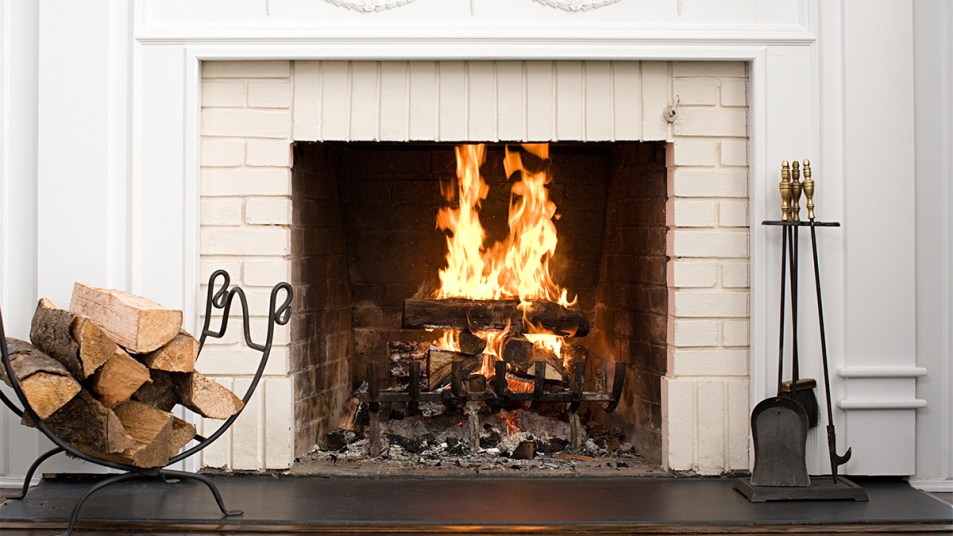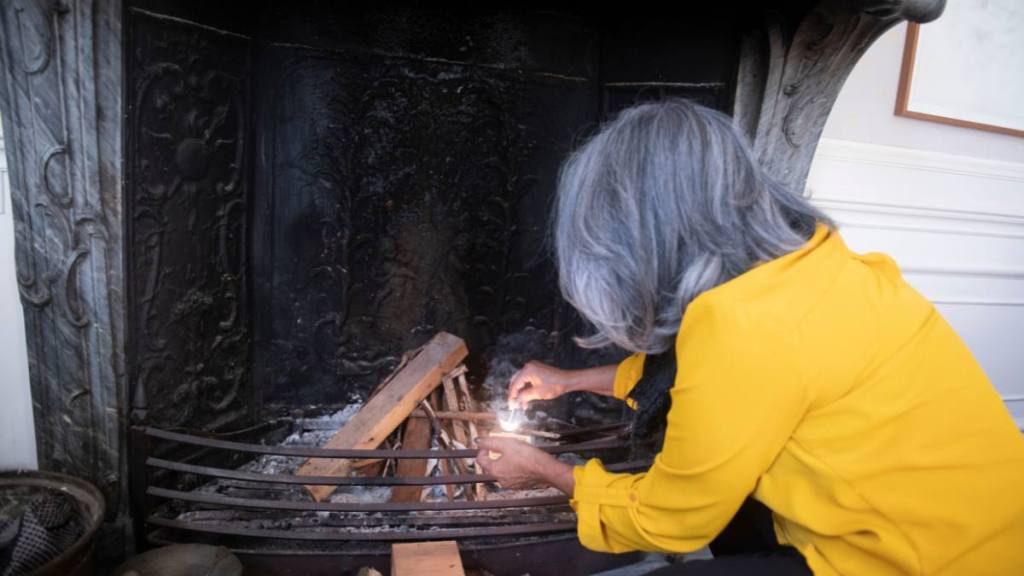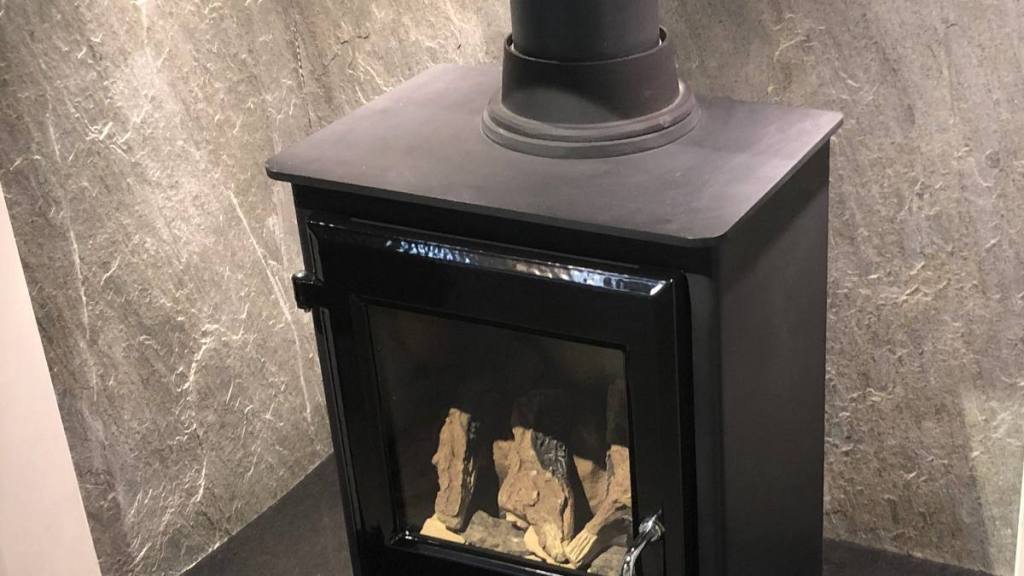Pro Tricks to Starting a Fire in Your Fireplace Fast + the Two Things *Not* to Use
Plus, the orange peel kindling trick that’ll leave your home smelling great!

A roaring fire can make any dark, cold night feel warm and cozy — but anyone who has tried to start a real wood-burning fire knows it’s not as easy as it looks. Starting a proper fire takes several elements, including materials that will burn at different speeds as well as the right temperatures to create oxygen flow that will feed the flames, explains campfire expert Tyler Schneli of CampingTactics.com. “Leave out any of these keys, and your fire will fizzle.” Luckily, with these expert tricks for how to start a fire in a fireplace, you’ll be listening to that snap, crackle, pop in no time!
How to start a fire in a fireplace step 1: Use *these* 3 materials
Planning the perfect fireplace fire only requires gathering three materials.
1. Tinder
“Tinder is a very fine material that requires only a spark to light and will burn quickly to get the kindling started,” explains Schneli, revealing that typical materials are moss, wood shavings, dry bark and cotton balls. Important to note: While many people use newspaper or other types of paper as tinder, this is not recommended, cautions Peter Duncanson, a fire and disaster restoration expert with Service Master Restore. Paper can create too much heat, which then floats up the chimney and may cause a roof fire. Plus, paper that contains dyes or ink, like newspaper, can give rise to chemical fumes that get into your home.
2. Kindling
Kindling is made from small sticks or thin pieces of wood. “This material catches fire more easily than logs, but it burns more slowly than tinder,” Schneli explains. “Its purpose is to stay aflame long enough to catch your logs on fire.” Another great kindling option beside sticks? Dried citrus peels! “The flammable oils in the peels allows them to burn longer than regular kindling, so they’ll do a great job catching your logs on fire and smell great to boot,” says Olivia John, blogger at MySparklingLife.com.
3. Seasoned wood
Seasoned wood, which is meant to burn a long time once it catches, produces that lovely crackling sound that lasts all night. Logs should be between 16 and 18 inches in length and around 5 inches wide — this size will fit most fireplaces and wood stoves. Smaller logs will simply burn faster, so you’ll need to feed the fire more often, while larger logs will be harder to light but will burn longer once you get them going.
Important to note: “Seasoned” means the wood has been dried out for at least a year — you can typically determine this by making sure the bark is loose and the ends of the logs are cracked. It should also be grayer in color rather than yellow or green. Not only will seasoned wood catch more easily and burn more evenly, it’s also the only safe type of wood to use in an indoor fireplace. That’s because unseasoned wood — also referred to as “wet” or “green” wood — can lead to creosote buildup in your chimney. More on that below!
“Using all three elements — tinder, kindling and seasoned wood — is the ideal way to quickly catch a fire and keep it going,” assures Schneli. “Skip the tinder, and you’ll find the kindling too difficult to light; skip the kindling and the tinder will burn too quickly to light the logs.”
How to start a fire in a fireplace step 2: stack the fire
The way you place the three materials in your fireplace can make the difference between a fire that lights right up and one that quickly fizzles. “A fire needs three things: a spark, combustible materials for fuel and oxygen to breathe,” explains William Horton from HomebodyForever. “Stacking tinder, kindling and seasoned wood correctly helps ensure good oxygen flow and a healthy fire.”
There are three main ways to stack a fire — they’re all equally effective, but one might be easier than the others depending on the size of your logs or your firebox, the brick or stone area where you light your fire. Just find the “design” that best suits you:
1. Larger firebox? Use the log cabin method
Lay down your tinder, then pile a bit of kindling on top. Now stack two logs parallel to each other on top of the kindling; set two other logs perpendicular on top. This creates an empty square space in the middle of the logs that will keep oxygen flowing once the fire gets going.
To see this method in action, watch the video below:
2. Tall firebox? Use the cone method

Consider this shape if your firebox is tall and somewhat narrow and the logs are small. To start, prop up the kindling vertically to form a small cone — like you’re building a teepee — and place the tinder at the base. Light the tinder and continue adding kindling until the flame burns hot. Then lean your logs against the outside of the “teepee.” Leave space between the logs to prevent the fire from being smothered.
3. Small firebox? Use the lean-to method
This strategy is best for smaller fireboxes or if the logs are on the larger side. Start by putting down a layer of tinder; place just one larger log on top, then lean a layer of kindling against the log. Light the tinder, and as the fire starts to build, the log will begin to burn. You may now slowly add more wood to the fire.
How to start a fire in a fireplace step 3: Light the fire
Now that your three materials are stacked properly, you’re ready to light your fire! Though you’ve heard it before, it bears repeating: Never start a fire indoors using lighter fluid. It can create a huge initial flame that may lead to a house fire. Instead, just use a long match or grill lighter and light your tinder until it catches. Touch the flame to pieces on both sides and the middle so the tinder catches evenly.
After a minute or so, the kindling should catch, and your logs should follow suit a few minutes after that. If the fire goes out, simply start again by adding more tinder and kindling and re-sparking it.
To ensure fireplace safety

Wood stoves and fireplaces cause more than 4,000 home fires every year — and are responsible for up to 90% of home heating-related fire injuries, according to the National Fire Protection Association. One of the top causes? Creosote buildup, the unburned hydrocarbons in wood.
“Creosote can damage the lining of your chimney and is highly flammable,” explains Russ Dimmitt, director of education for the Chimney Safety Institute of America. “Levels of creosote can increase when burning wood that’s too ‘wet ’— this creates a higher percentage of hydrocarbons, which condense on the chimney walls. That’s why using seasoned wood is so important when burning fires indoors.”
Another way to ensure less condensation? Pre-heating your flue, the area right above the damper — this helps warm the chimney column and leads to less condensation. To do: light one end of a dry stick or piece of kindling, then hold it above the damper toward the chimney as far as you can reach. You’ll know it’s pre-heated when the smoke from the small flame stops flowing back into the fire area and starts getting pulled upward, usually after 30 seconds or so. Now you’re good to start your fire!
Bonus: This will cause less smoke to flow back into your home when you get your fire started.
For more fireplace or fire starting tips, click through the links below!
13 Freestanding Fireplaces to Cozy Up in Front Of
The Cola Trick to Getting Bricks to Look Their Best + More Ways to Clean a Brick Fireplace
How to Light Charcoal Without Lighter Fluid — BBQ Pros’ Genius Tricks Make It Easy












